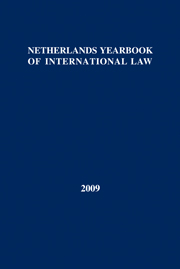Article contents
Maritime interdiction of weapons of mass destruction in an international legal perspective*
Published online by Cambridge University Press: 25 June 2008
Abstract
The illicit transport of WMD materials by sea combines contemporary terrorist and proliferation threats with maritime shipping realities to form unprecedented dangers. To counter this threat to international peace and security, worldwide efforts to increase capabilities and cooperation for the interdiction of vessels that are engaged in the trafficking of such materials have in recent years been on the rise. This strengthened emphasis on maritime interdiction, however, is also the subject of much international debate in which, unfortunately, the international law issues that are involved are frequently inaccurately represented. On the one side, too narrowly constructed views of the existing international legal possibilities are often set against expectations of sweeping expansion of maritime interdiction action beyond these confines. On the other side, suggestions of overly broad interdiction possibilities also repeatedly surface. As such, both sides fuel concerns that legal norms will be sacrificed for the objective of countering proliferation and terrorist threats by sea. This article addresses such suggestions by analysing the current scope of maritime interdiction possibilities in international law and considering the extent to which State practice may reflect action and policy in conformity with the international legal framework. The article concludes that the present state of affairs and the ongoing developments involving maritime interdiction of WMD reflect the international law process of constant adjustment by which the essential economic, navigational and security interests that are at stake are held in balance.
Keywords
- Type
- Articles
- Information
- Copyright
- Copyright © T.M.C. Asser Press 2007
References
* © P. Jimenez Kwast, 2008.
- 2
- Cited by


